MAY 30, 2024: Yesterday we visited Skara Brae, a neolithic village here on Mainland Orkney. Today we will visit a few more sites with ancient remains.
We slept last night in a campground in the northwest corner of the island. Near us is the Brough of Birsay, a small, uninhabited, tidal island. You can walk to the island from two hours before low tide until two hours after. Low tide this morning was at 7:15.

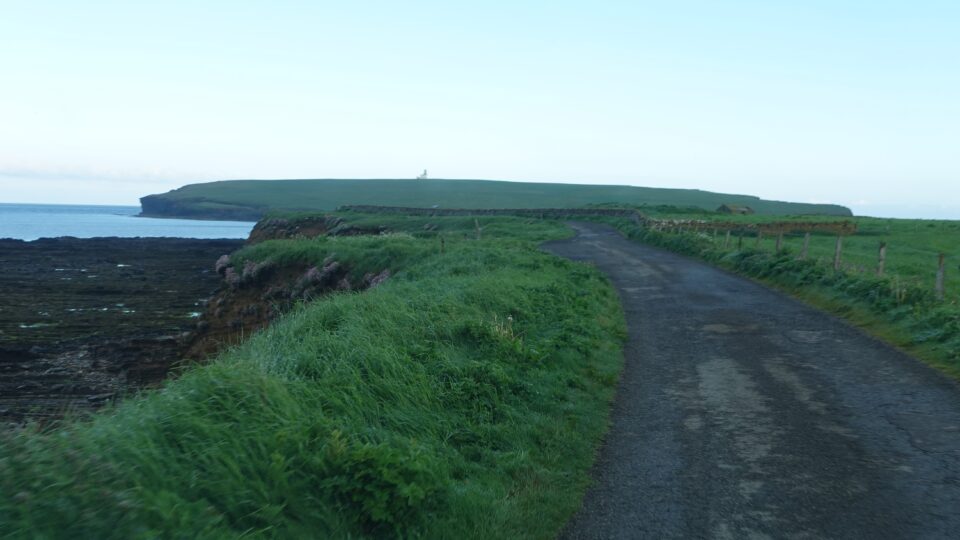
We set an alarm to wake us up early and reached the Brough of Birsay car park before 7:00. From the car park we walked down a set of stairs to the sandy beach, and from there begins the crossing to the island. The first 2/3 of the crossing is a paved pathway, but the last 1/3 is over large boulders and slippery seaweed.

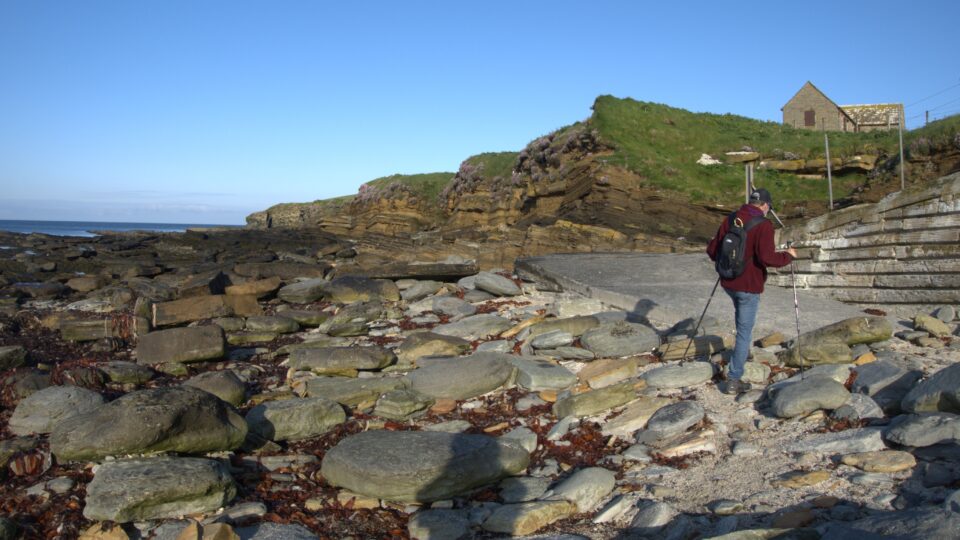
We reached the island and were surprised to find the remains of a Viking village there. Most interesting was a standing stone with carvings. This is a Pictish symbol stone, from the Picts who once lived here. Who were the Picts?
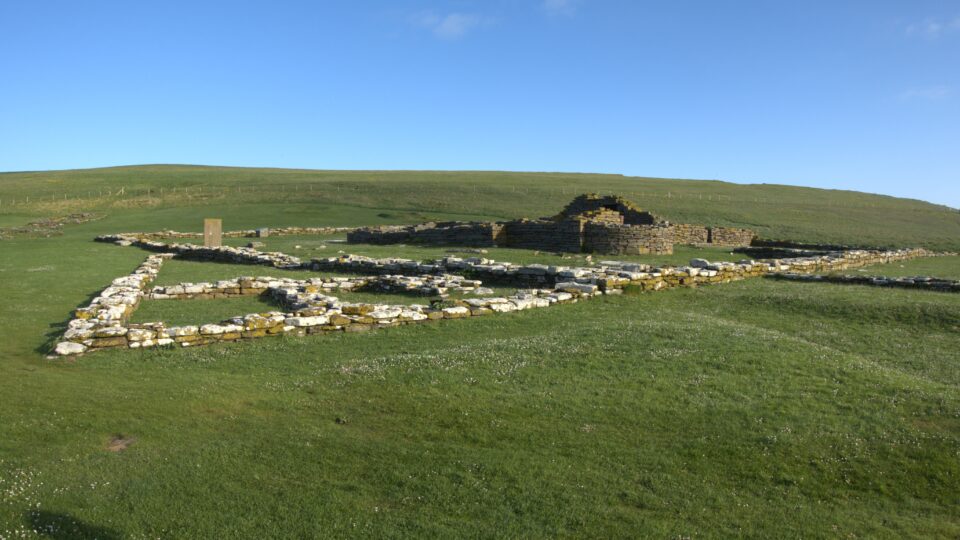
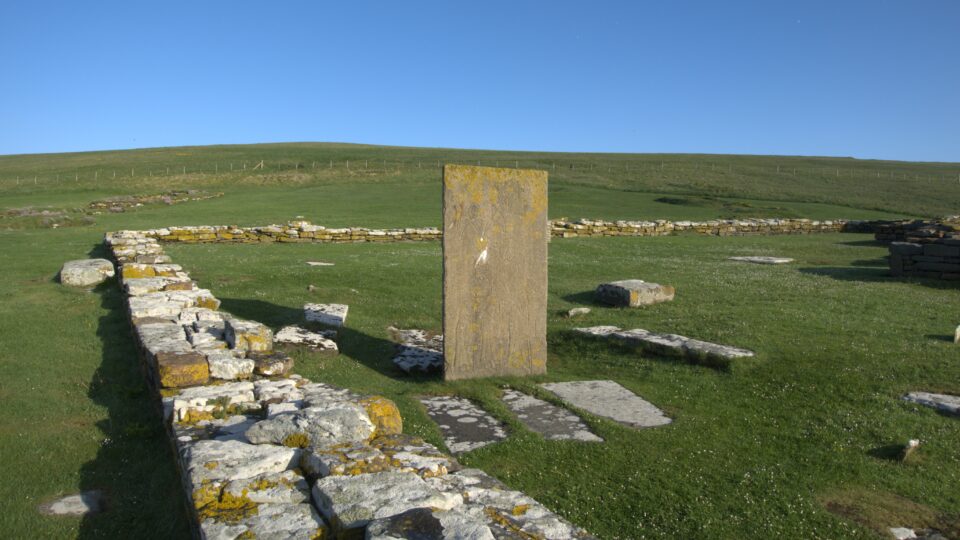
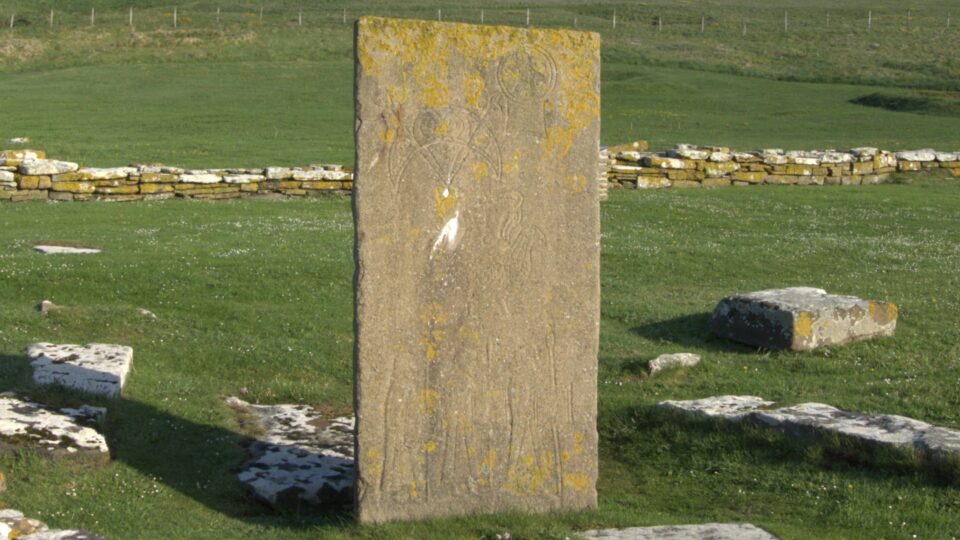
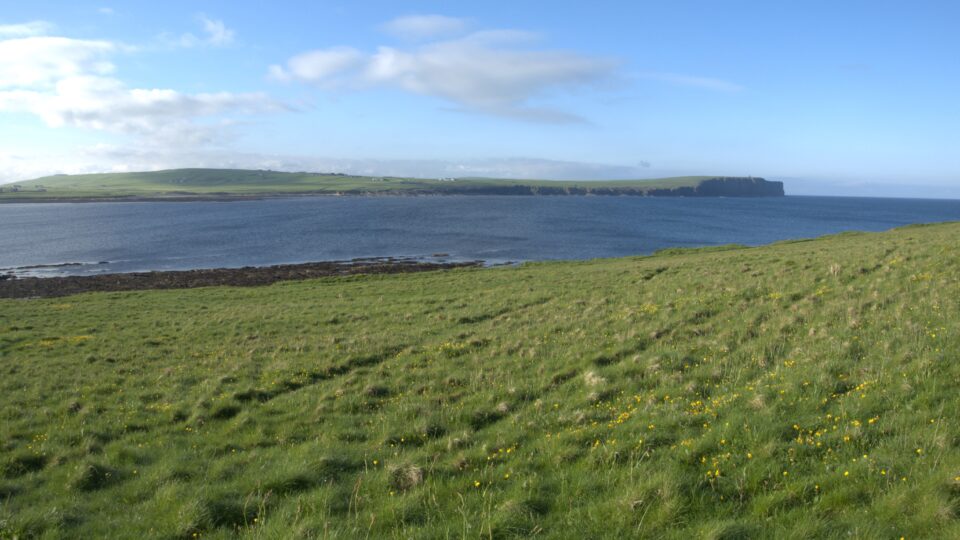
The Picts were an Iron Age people who lived in the northern and eastern parts of what is now Scotland, flourishing from approximately the fourth century CE to the ninth century. The Romans depicted the ancestors of the Picts as fearsome warriors — savage, barbarous, troublesome and backward, who never succumbed to Roman rule. The Romans, after several failed attempts to conquer these people, eventually erected barriers, such as Hadrian’s Wall to keep them out of the south.
On the symbol stone, you can recognize people and a bird overhead, as well as other symbols. Here on the island is a cast of the original stone, which is in the National Museum of Scotland in Edinburgh.
The remains of the Viking village here sit on the remains of a Pict village.
From the site of the ruins, we walked up towards the Brough of Birsay lighthouse, feeling we had this whole small island to ourselves.
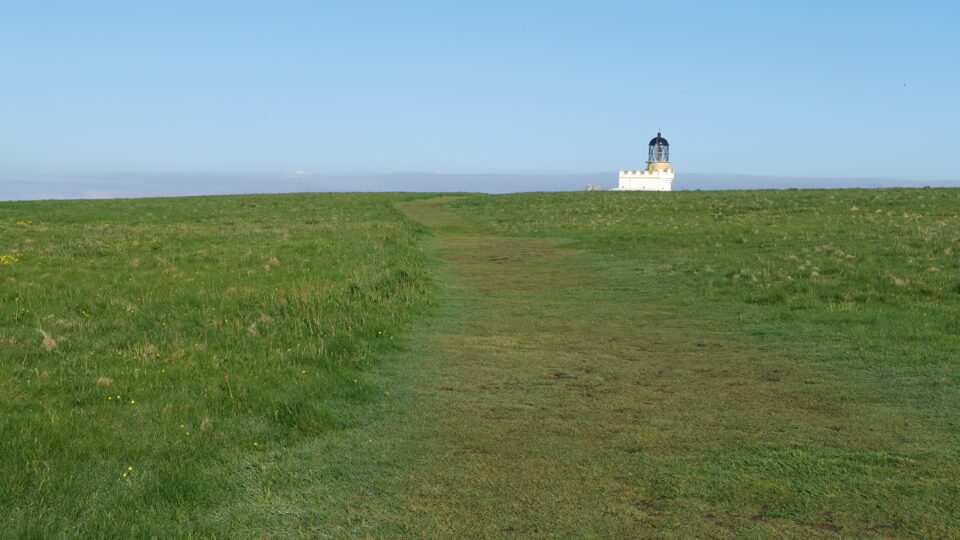

Standing only 11 meters high, the Brough of Birsay lighthouse marks the northeast tip of the Orkney Mainland. It too is one of the lighthouses built but the Stevenson family – it was designed and built by David A. Stevenson in 1925, son of Robert Stevenson. Its character is three flashing white lights every 25 seconds.
What is different from other lighthouses we saw, was this lighthouse was converted to renewable energy in 2002. The light is powered by a bank of batteries, which are charged by an array of 38 solar panels and 4 wind turbines.
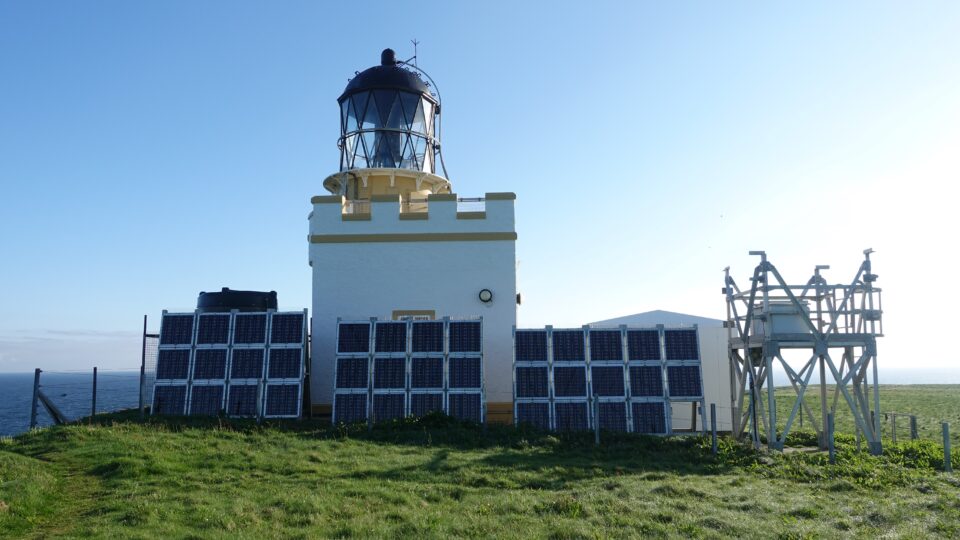
Like the other lighthouses we visited, this lighthouse is monitored from the Northern Lighthouse Board’s headquarters in Edinburgh. Maintenance is carried out once a year when Northern Lighthouse Board technicians visit the site.
From the lighthouse, we walked back along the cliffs, with beautiful views of the Orkney Mainland.
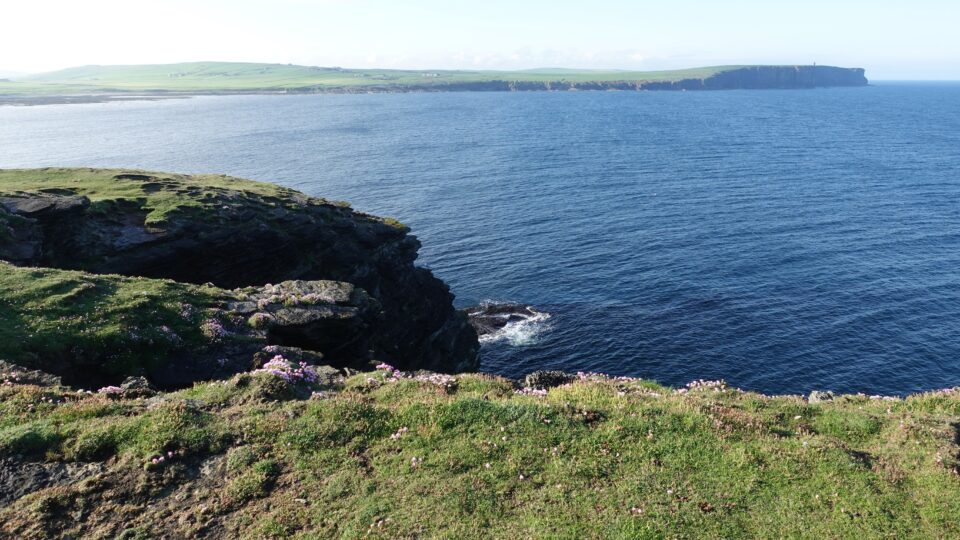
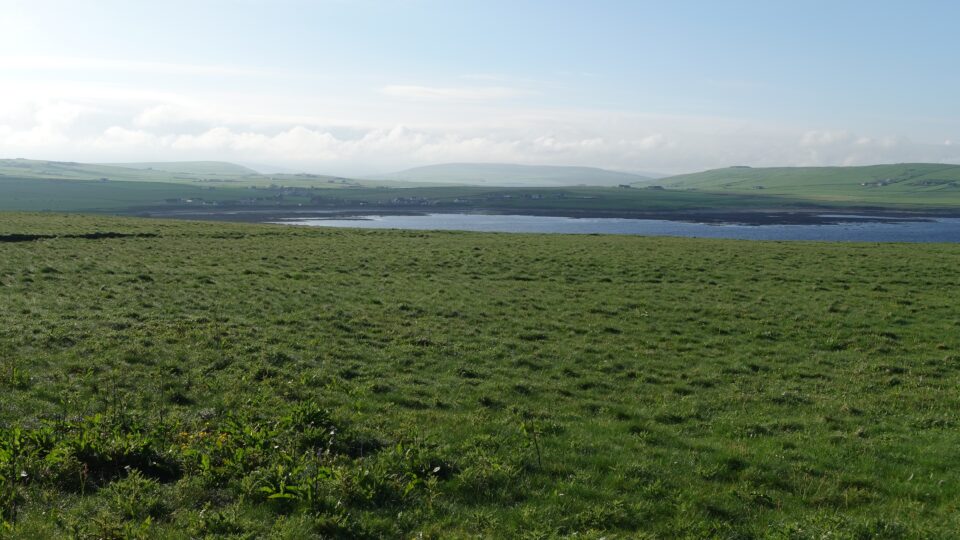
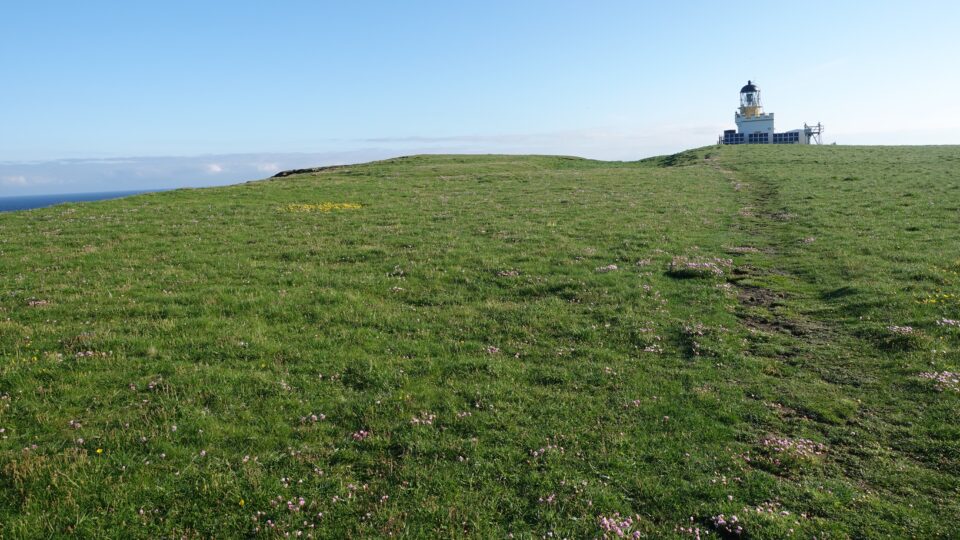
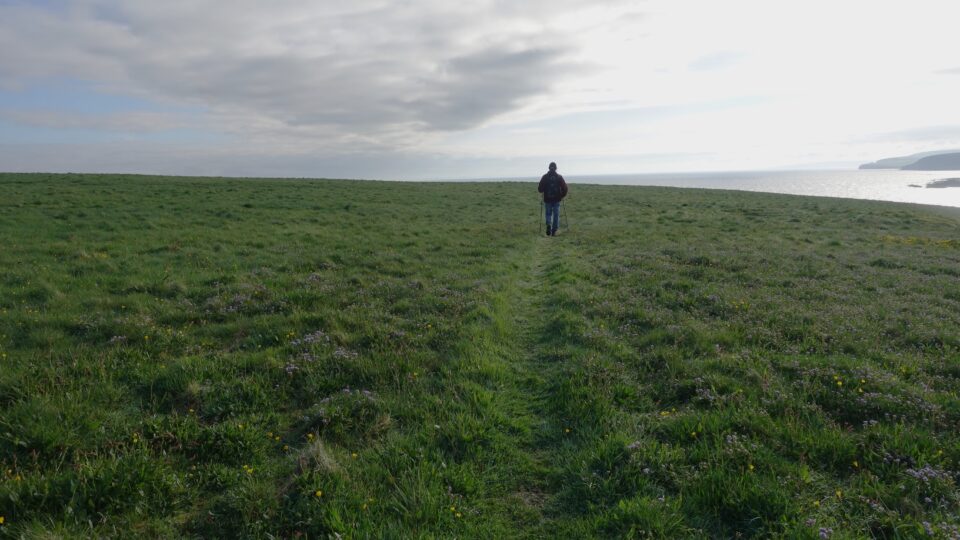
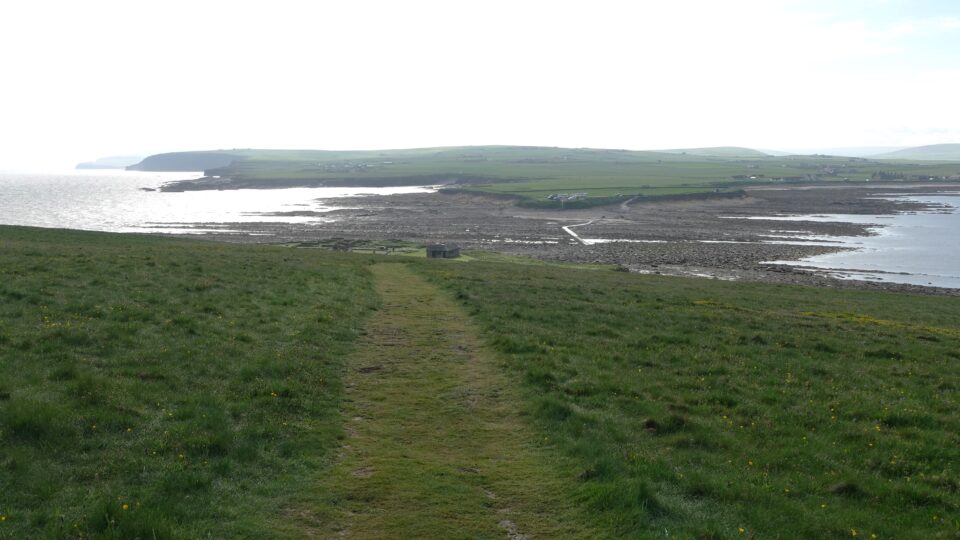
As we approached the crossing to return to our motorhome, we heard the loud sounds of machinery. We could not figure out where this was coming from – it was so out of place. Eventually we saw a crew cutting the grass and doing maintenance around the ruins of the Viking village – they were the source of the noise.
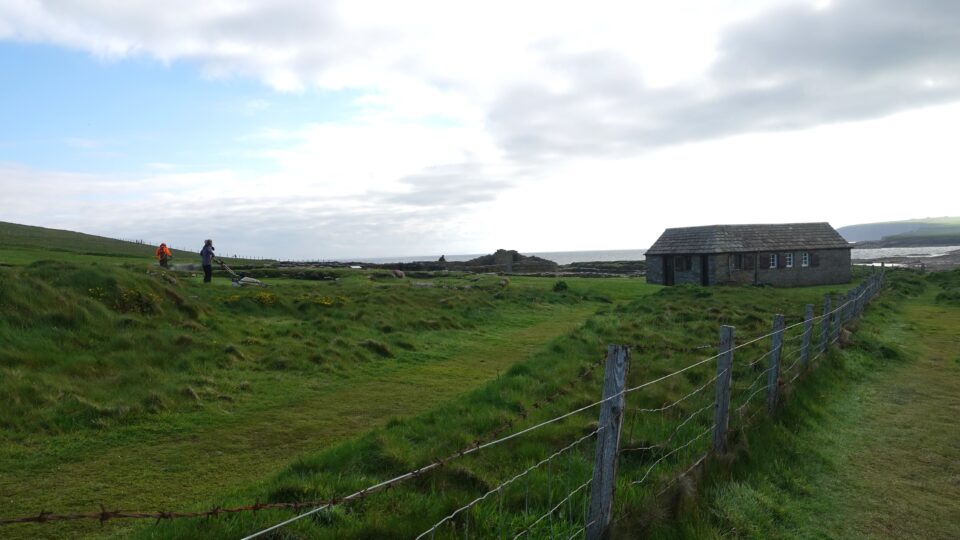
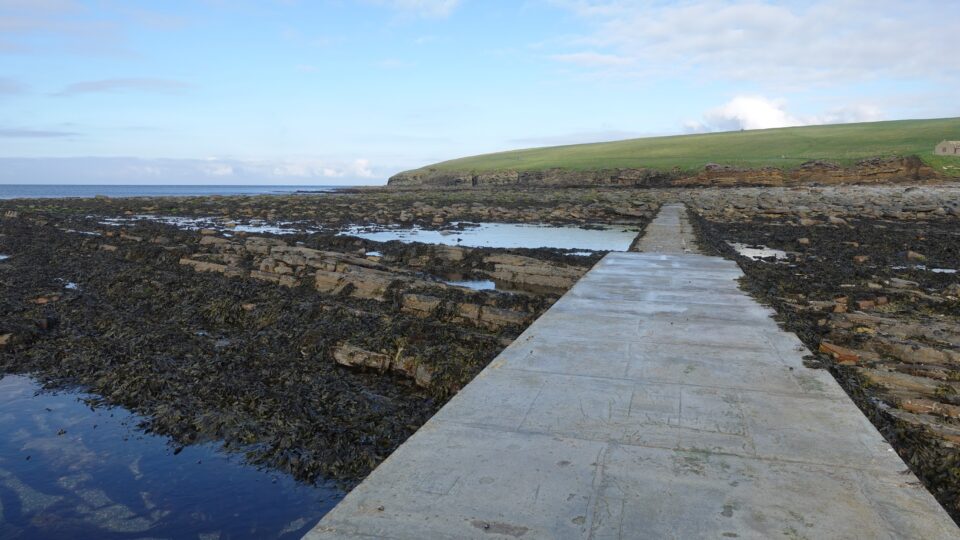
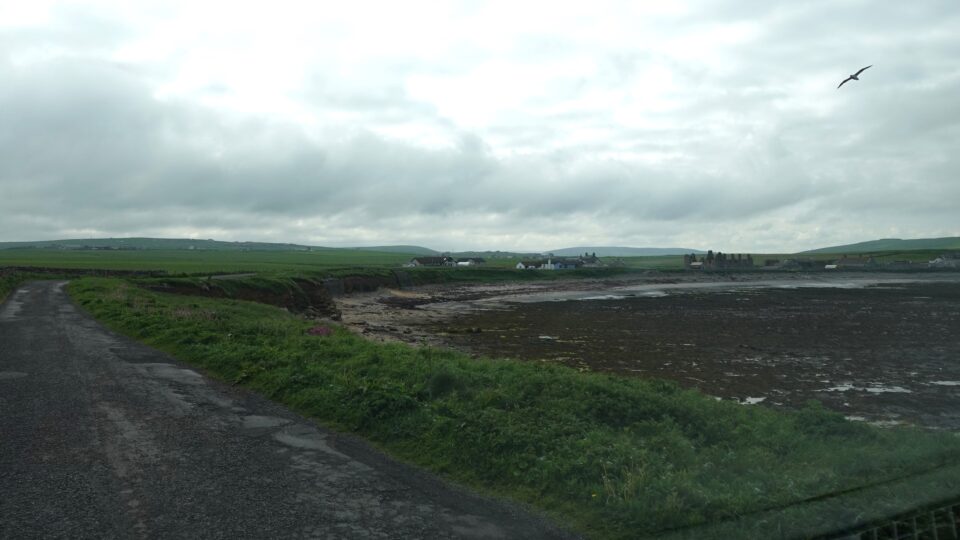
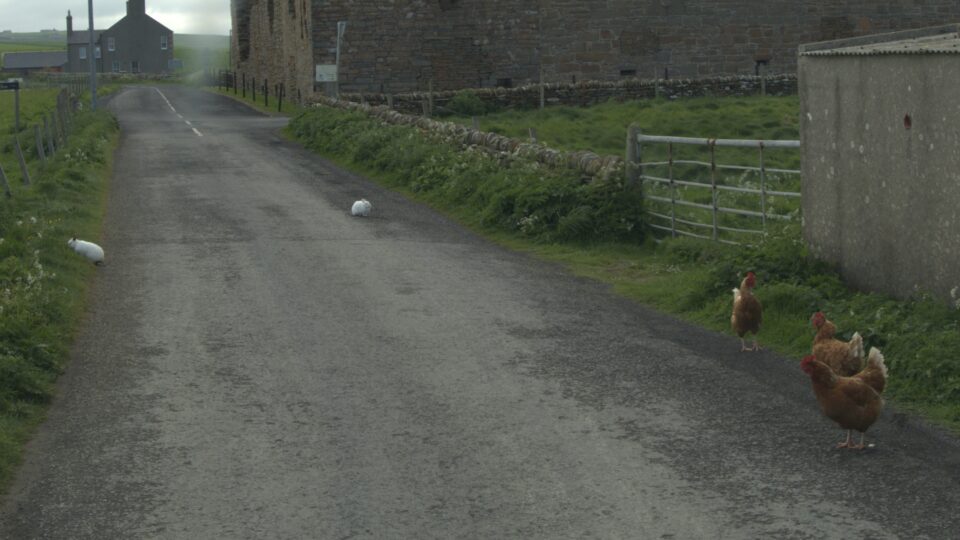
We drove through the beautiful Orkney countryside to our next destination – the Ring of Brodgar.
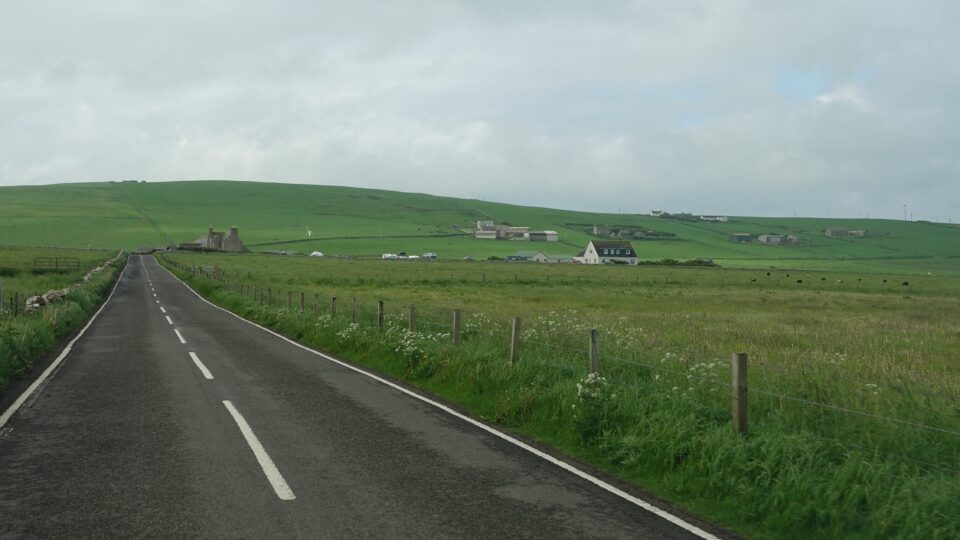
The Ring of Brodgar is a Neolithic stone circle whose exact purpose is not known. The ring is 5,000 years old, older than Stonehenge. Today there are 21 erect stones, two fallen stones and a further ten that can be seen as stumps where once a stone was placed. If originally the stones were placed equal distances from each other, then there would have been 60 of them. Somedays you can walk among the stones, but today it was not possible, due to erosion damage. We could only walk on a path around the perimeter of the circle. Still very impressive.
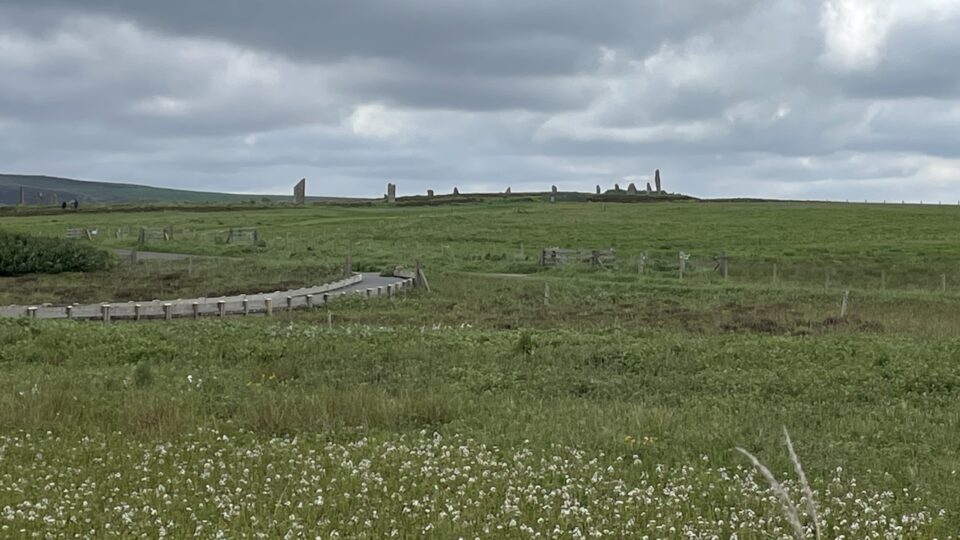
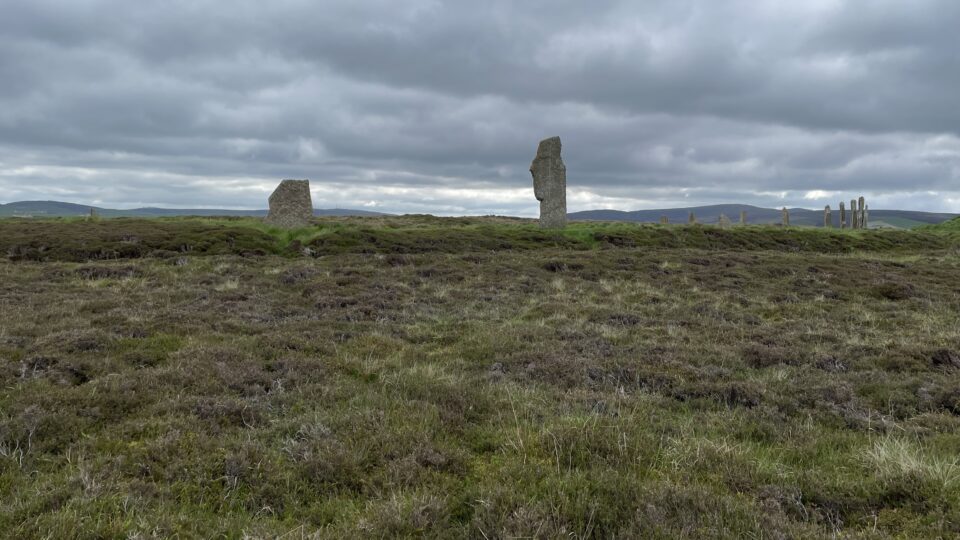
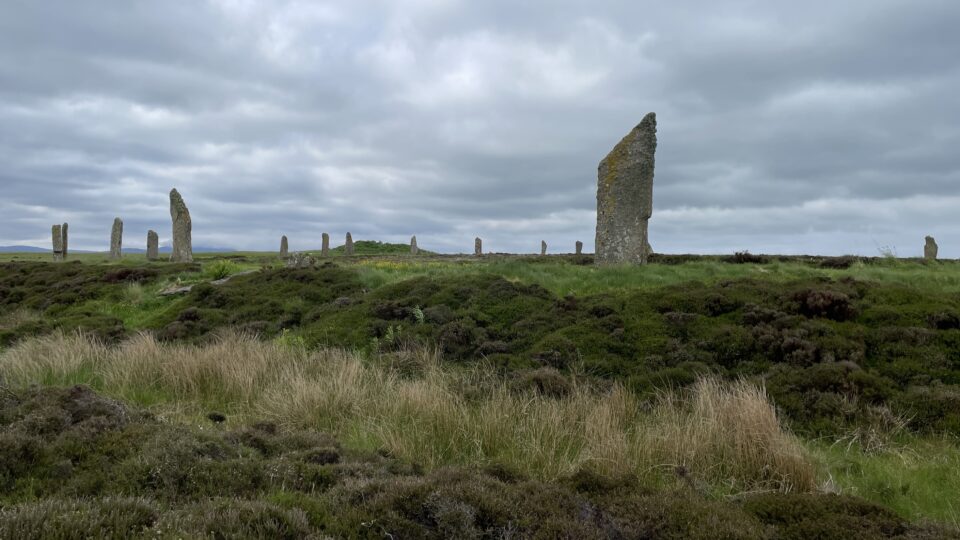
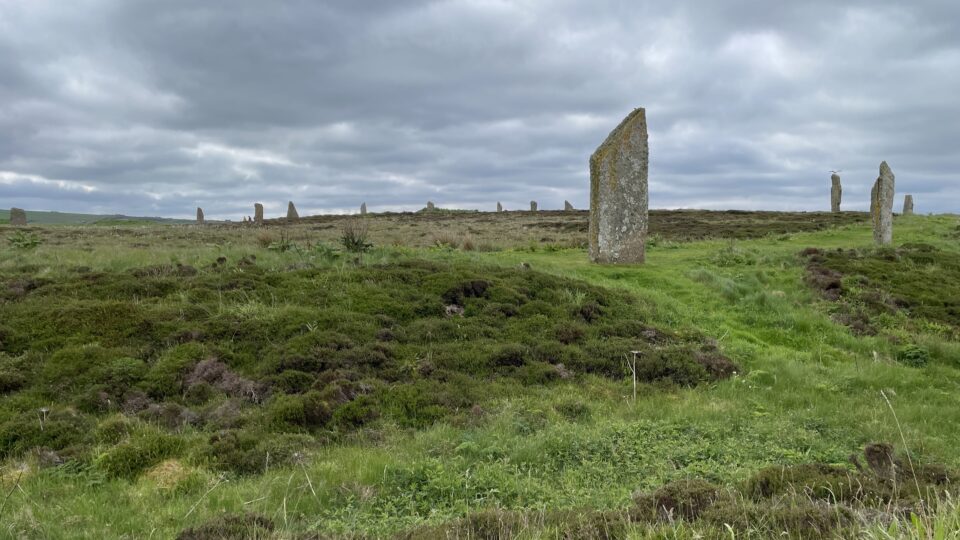
The Ring of Brodgar is also considered to be a henge. A henge is a Neolithic structure made from earth. It is usually a circular mound of earth on the outside, and an inner ditch behind the mound. Some henges have additional structures (like standing stones) within the circle. Stonehenge, I assume, is also a henge based on its name.
A short drive away from the Ring of Brodgar are the Stones of Stenness. This is a much smaller circle, but the stones are much taller. The Stones of Stenness today consist of four upright stones in a circle that originally held 12 stones. They are thought to be even older than the Ring of Brodgar, built about 5,400 years ago. Like the Ring of Brodgar, their function is unclear.
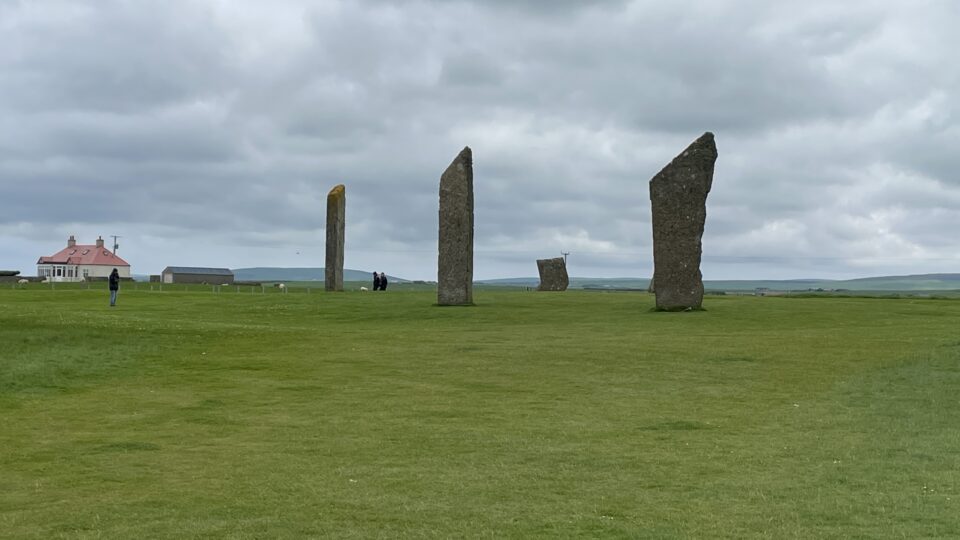
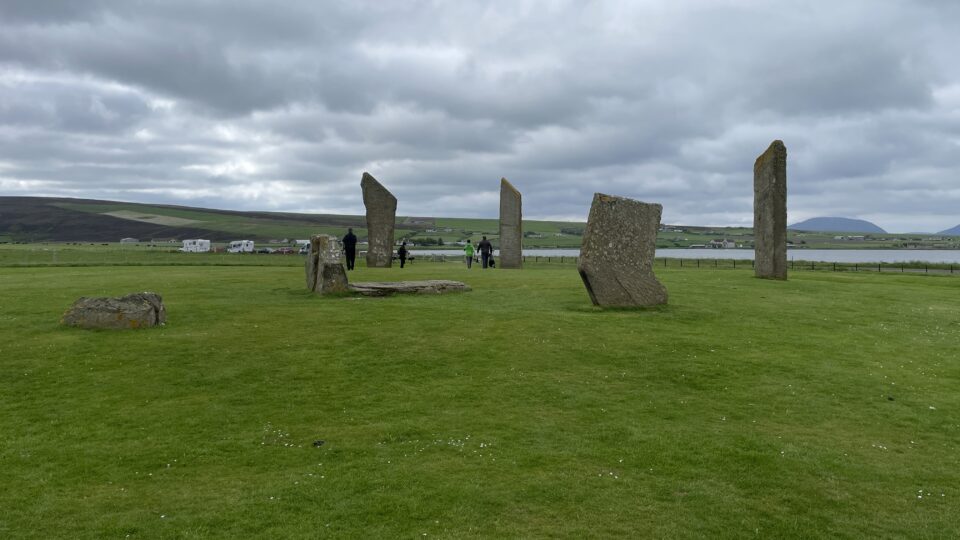
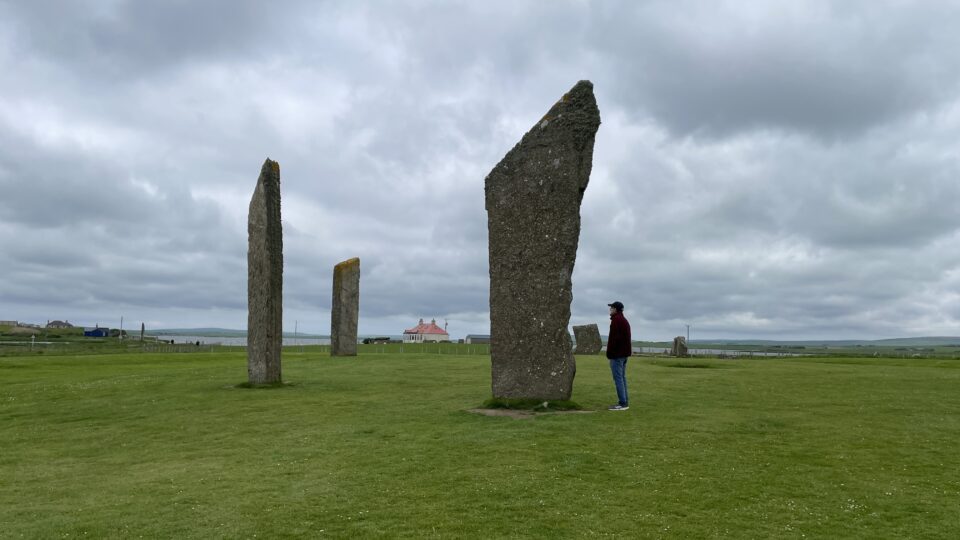
Near the Stones of Stennes is the Barnhouse Neolithic village. It has the remains of a group of homes, similar to those in Skara Brae with their own hearths, box beds and stone furniture. One school of thought is that, with its proximity to the Standing Stones of Stenness, it could have been the homes of the stonemasons who built the circle.
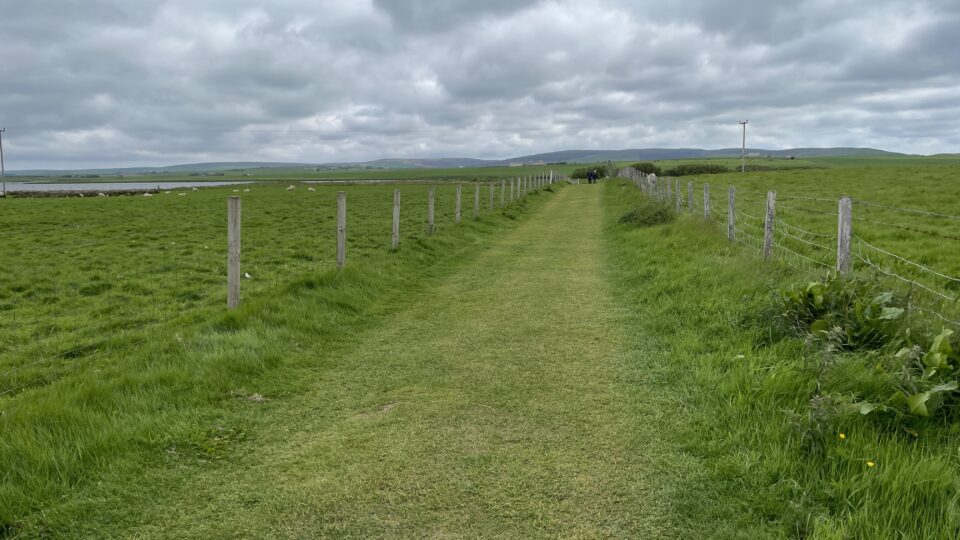
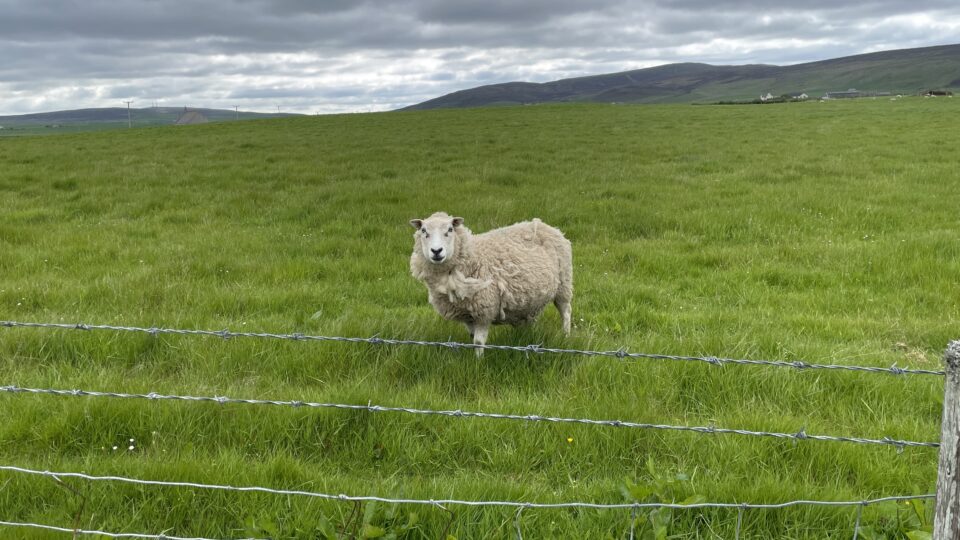

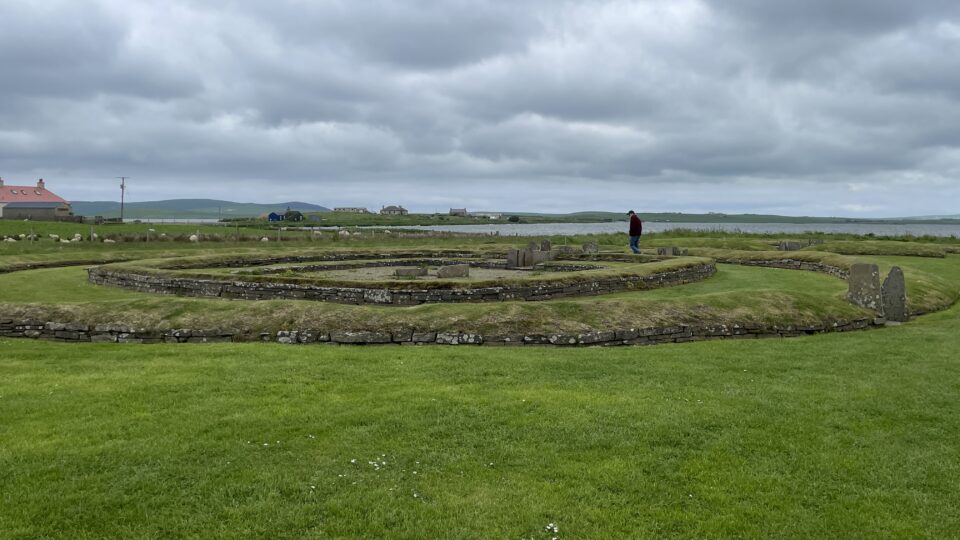
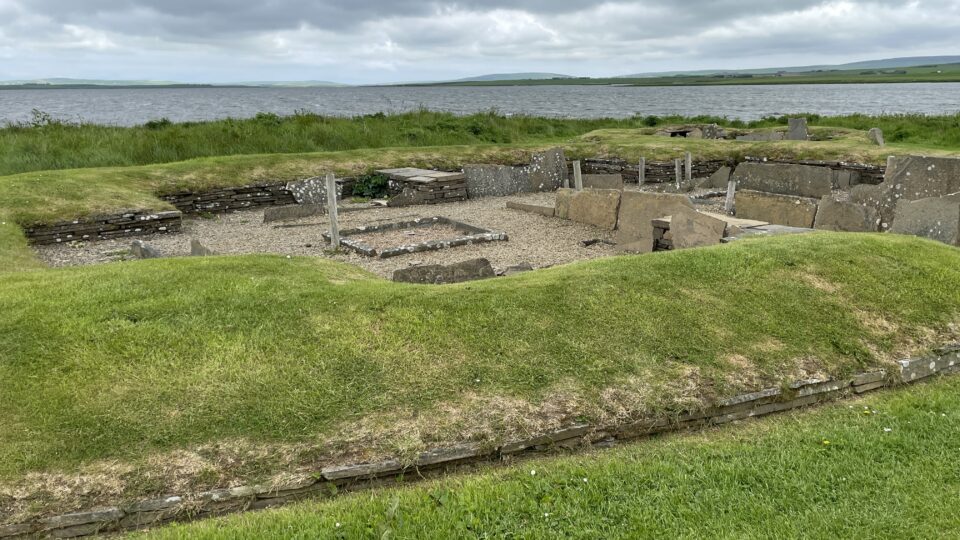
Between the Ring of Brodgar and the Stones of Stennes, is the Ness of Brodgar. Discovered in 2003, the Ness of Brodgar archeological site has been under excavation since 2004, revealing a massive complex of Neolithic buildings. It is open to visitors only several weeks a year, not while we were there. After this year, however, they are refilling the excavation to preserve it and it will no longer be visible.
From the Stones, we drove to Kirkwall, the largest city on Mainland Orkney (population 10,020 in 2020). In Kirkwall, they have two large supermarkets, including our favorite – the Tesco Superstore. We filled up with fruit and vegetables, and drove to our campground for the night, just north of Kirkwall.
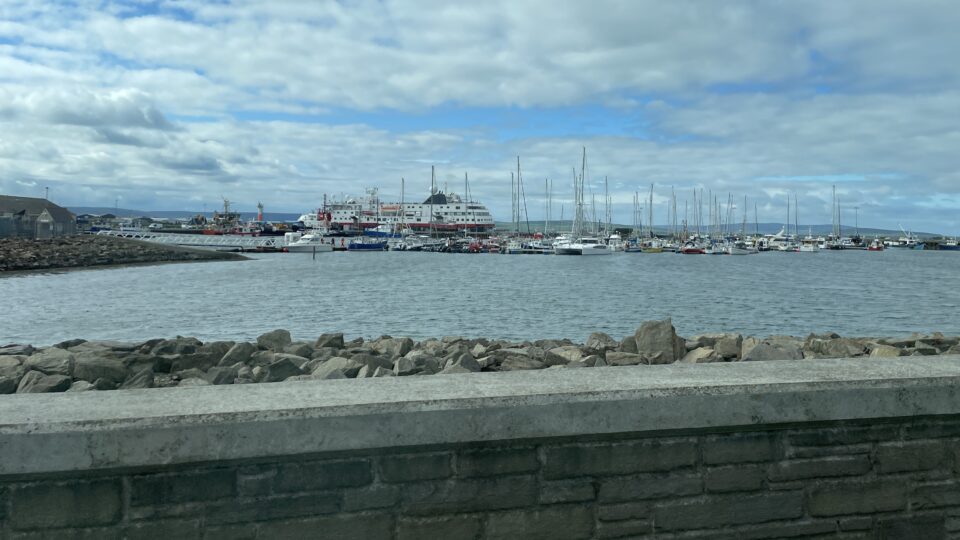
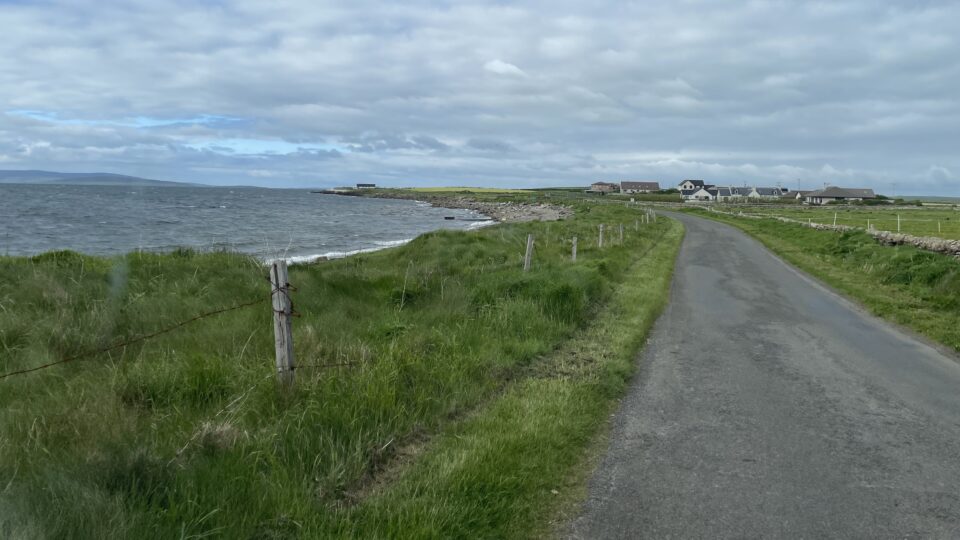
In the afternoon we returned to Kirkwall, and after some trouble finding a parking spot appropriate for a motorhome, we went to the small pedestrian area with tourist shops.
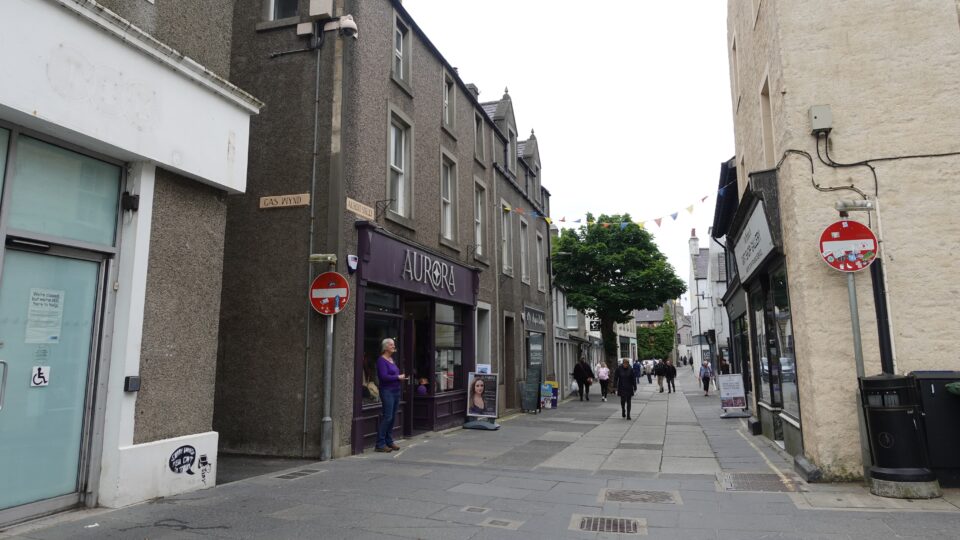
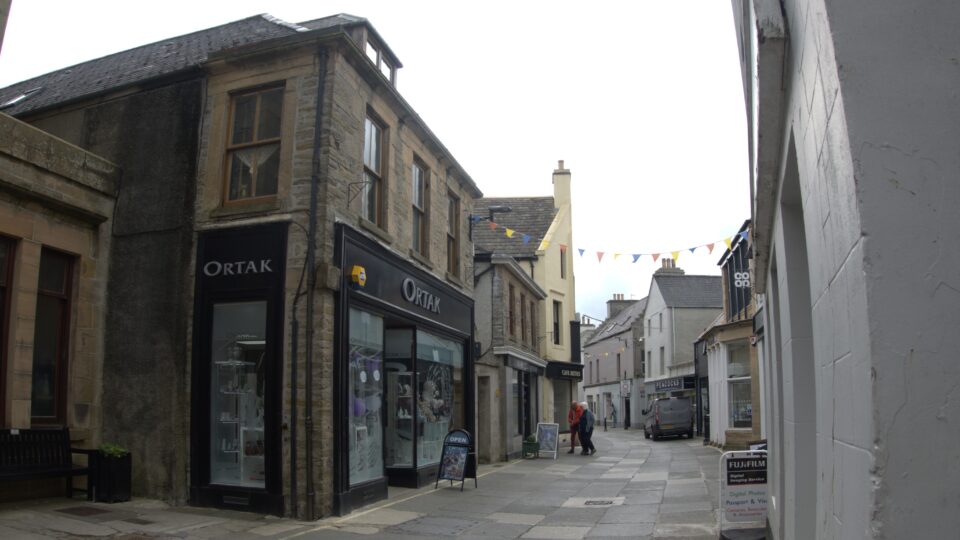
Mark’s older sister traveled the world, and from each place she would send Mark a T-shirt. Since she passed several years ago, Mark has not gotten any new T-shirts and we thought we would buy some during our trip here, to commemorate her. There was not such a big T-shirt selection, but we finally found one that we liked.
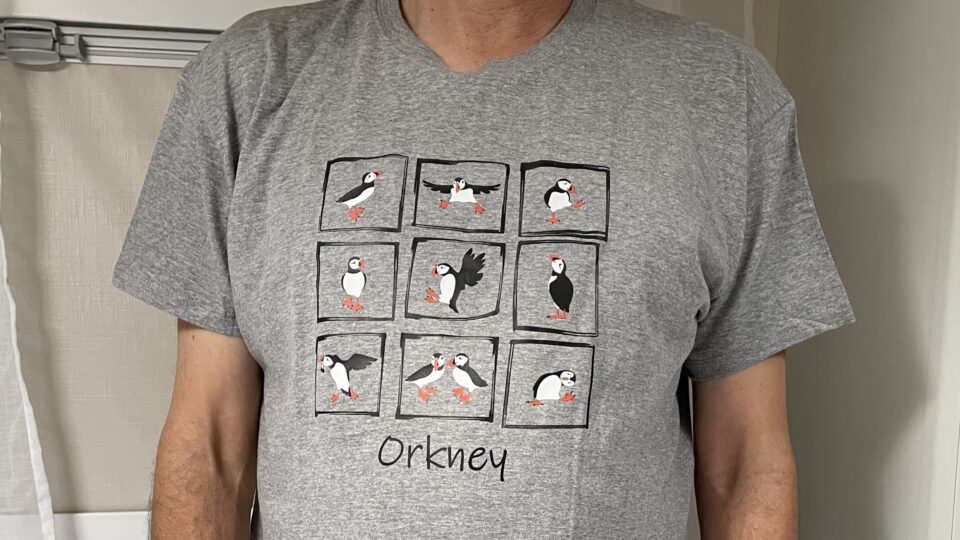
We were also surprised to find a vegan café in Kirkwall. We stopped in, and the owner said she could only serve us soup. The day had been so slow that she had already sent her staff home. It was cold and windy outside, so hot kidney bean soup was perfect.

We then went to the nearby Museum of Orkney. It has an exhibit about the history of the Islands. There was now also a special exhibit about the Ness of Brodgar, the archeological site that will soon be refilled.
At most places we visit, and also in this museum, there are activities dedicated to children. One of the activities here was to make press drawings of the carvings on the Pictish symbol stone we had seen this morning.
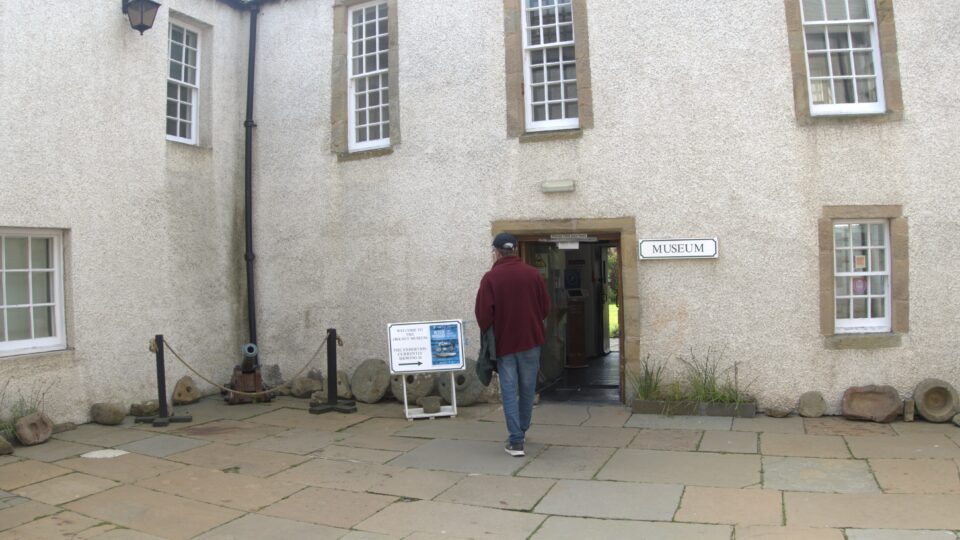
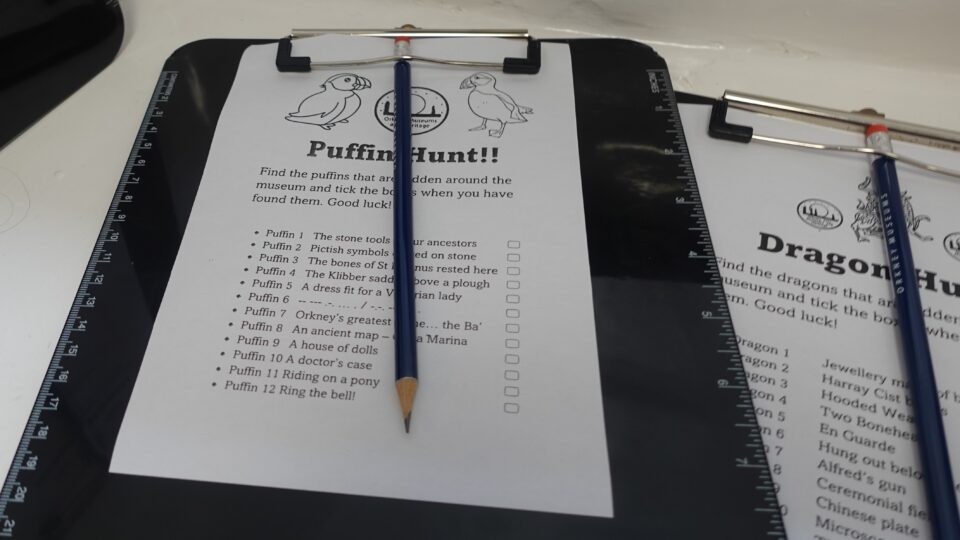
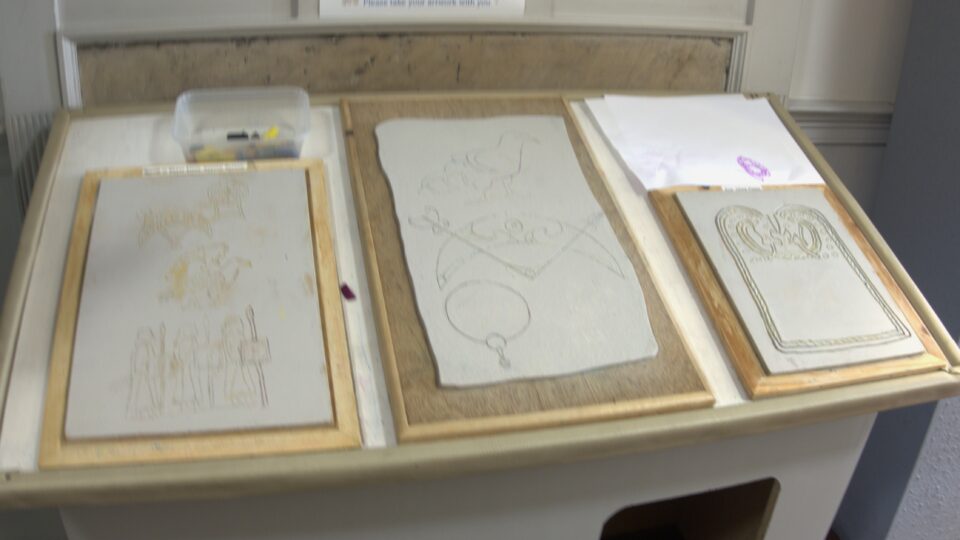
Today we had seen several sites related to the ancient history of Mainland Orkney. Tomorrow we plan to see something related to Orkney’s more recent history.
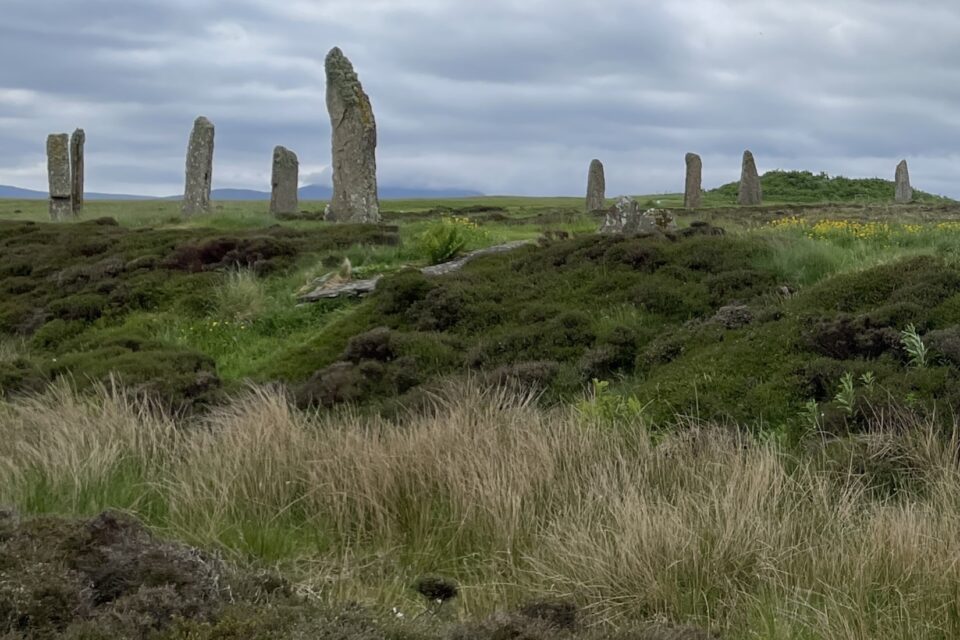
Loved the stones of stennes!! I guess that came from ancient agreements among the native people: the pacts of PICTs 🤣
I love how you share every detail, using all of my senses, I could hear the sound of the machinery very well!
Have you seen any Puffins, like on the T-shirt?